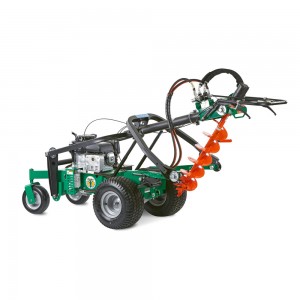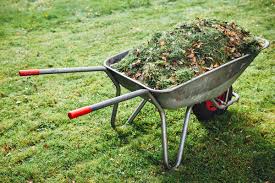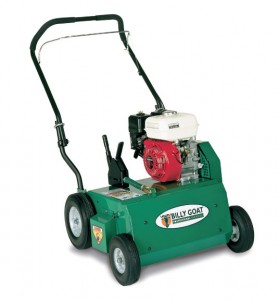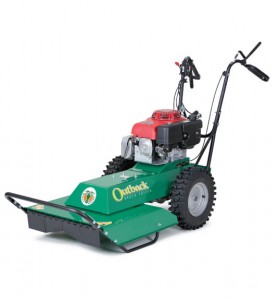Billy Goat debris loaders vacuum up lawn debris, chop them up, and drop them into your truck bed or trailer. This saves time on cleanup jobs, and the compacted debris cost less to dispose of. Which debris loader model will deliver the best return on your investment?
How Much Power do These Loaders Have?
The DL13 is powered by a single cylinder Honda GX-Series engine, while the DL14 and DL29 use Vanguard V-Twins. Glancing at the horsepower ratings, you would think that the DL13 and DL14 are evenly matched, while the DL29 should have twice the performance. However, the vacuum ratings tells a different story.
DL1302H: 2,100 CFM
DL1402VE: 3,700 CFM
DL2901VE: 4,400 CFM
Why is the DL14 so much closer to the DL29 than the DL13? The DL13 uses a smaller impeller that can pump loads of air, but doesn’t chop heavy debris as well as the other models. The DL29 has a massive impeller with 12 blades, four more than the DL14. This reduces air flow, but it helps the loader chew through large quantities of debris. All three models have Piranha blades, which have edges that slice through grass and leaves, compacting them up to 12:1.
Which model has enough power for your needs? The DL13 is great for small crews, while the DL14 is aimed at contractors and regular municipal use. The DL29 is targeted at municipalities that need to clean massive areas, like parks and campuses.
What are My Options for Mounting?
While most debris loaders on the market require some custom fabrication for mounting, Billy Goat’s CustomFit system gives you some options:
– Use the holes in the skid to bolt the loader to a trailer
– Bolt the loader to a CustomFit trailer
– Hang the loader on a truck or trailer tailgate using a CustomFit hanger kit,
– Attach a CustomFit Swing Away hitch and slide the loader into your truck or trailer’s hitch receiver.
– Attach a CustomFit Stake Body Swing Away hitch and slide it into one of the stake supports on your flatbed truck or trailer.
Every debris loader is mounted to a skid with fork pockets. You can use a fork lift to position the loader, or transfer it between vehicles if you use a hanger or swing away hitch. The DL2901 is too big for a hanger kit or swing away hitch, but it can be mounted to a trailer.
Here’s what these machines weigh without adding accessories:
DL1302H – 230 lbs.
DL1402VE – 280 lbs.
DL2901VE – 490 lbs.
Both the DL1302 and 1402 are 32.25 inches tall from the factory, and you can add extensions to the chute for more reach. The DL2901 is almost 75 inches tall before adding extensions.
Billy Goat makes horizontal and vertical extensions, as well as swiveling mounts that let you turn the entire chute. You can add up to 5 feet of horizontal reach with an extension hose, or use a deflector to aim the flow of debris into your truck or trailer. The vertical extension adds 15 5/8 inches of height. You cannot use this extension with the rotational chute kit.
Get the Parts and Accessories You Need for Your Billy Goat
When you need something for your Billy Goat, go to Billy Goat Parts. We carry the full line of OEM parts and accessories for your equipment, including extensions, mounting kits and replacement hoses for all of the company’s debris loaders.Check out or commonly ordered parts pages for fast ordering. We also have a search engine that can show you diagrams and parts information specific to your model. Visit us at www.billygoatparts.com. We ship across the United States and Canada.
-
Recent Posts
- Billy Goat Common Controls: Safe, Simple, Standardized Equipment Operation
- Cutting Through the Grass: Key Differences Between the Billy Goat Sod Cutter Models
- Beyond Fence Post Holes: 3 Alternative Uses for the Billy Goat Landscape Auger
- Which Leaf Blower is Right for You?
- Servicing AET 48/72 Towable Aerators
Recent Comments
- Clarence on Which Billy Goat Brushcutter is Right for You?
- admin on Servicing the Briggs & Stratton Vanguard V-Twin
- Ryan ODONNELL on Servicing the Briggs & Stratton Vanguard V-Twin
Archives
- June 2023
- April 2023
- July 2022
- June 2022
- May 2022
- April 2022
- March 2022
- February 2022
- January 2022
- December 2021
- November 2021
- October 2021
- September 2021
- August 2021
- July 2021
- June 2021
- May 2021
- April 2021
- March 2021
- February 2021
- January 2021
- December 2020
- November 2020
- October 2020
- September 2020
- August 2020
- July 2020
- June 2020
- May 2020
- April 2020
- March 2020
- February 2020
- January 2020
- December 2019
- November 2019
- October 2019
- September 2019
- August 2019
- July 2019
- June 2019
- May 2019
- April 2019
- March 2019
- February 2019
- January 2019
- December 2018
- November 2018
- October 2018
- September 2018
- August 2018
- July 2018
- June 2018
- May 2018
- April 2018
- March 2018
- February 2018
- January 2018
- December 2017
- November 2017
- October 2017
- September 2017
- August 2017
- July 2017
- June 2017
- May 2017
- April 2017
- March 2017
- February 2017
- January 2017
- December 2016
- November 2016
- October 2016
- September 2016
- August 2016
- July 2016
- December 2014
- November 2014
- October 2014
- September 2014
- August 2014
- July 2014
- June 2014
- November 2013
- October 2013
- September 2013
Popular Links
- aerating
- Aerator
- Billy Goat
- Billy Goat Aerator
- Billy Goat Aerator Parts
- Billy Goat Auger
- Billy Goat Blower
- Billy Goat Brushcutter
- Billy Goat Debris Loader
- Billy Goat Debris Loaders
- Billy Goat Equipment
- Billy Goat OEM parts
- Billy Goat Overseeder
- Billy Goat Parts
- Billy Goat Power Rake
- Billy Goat pressure washer
- billy goat pressure washers
- billy goat replacement parts
- Billy Goat Vacuum
- Billy Goat Vacuums
- Debris Loader
- Debris Loaders
- F18
- fall lawn care
- Force Wheeled Blower
- FZ Blower Attachment
- lawn care tips
- Lawn Maintenance
- Leaf Vacuum
- Maintenance
- OEM Parts
- OEM Replacement Parts
- Online Lookup
- Overseeder
- Overseeder parts
- Power Rake
- Pressure Washer
- pressure washer maintenance
- Replacement Parts
- Replacement pressure washer parts
- Sod Cutter
- Sod Cutter parts
- Troubleshooting
- Vacuum
- winter lawn care







